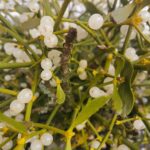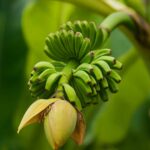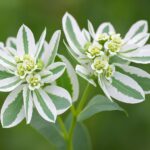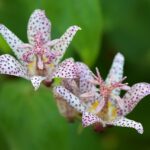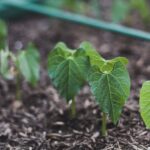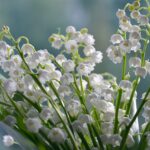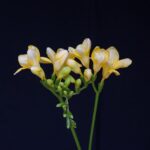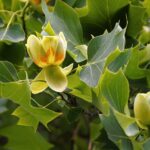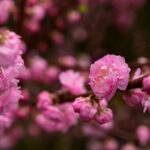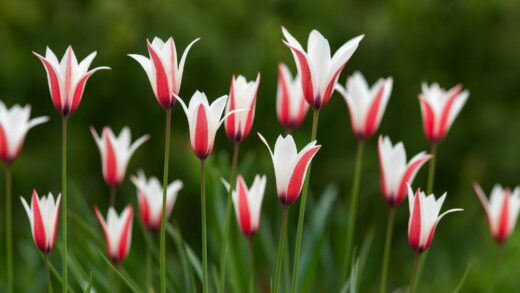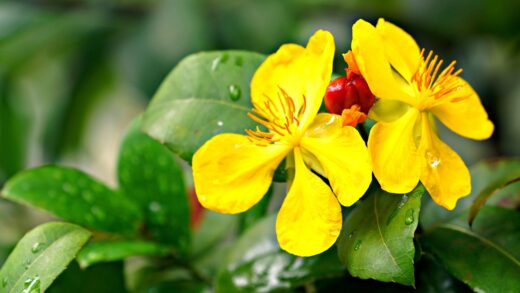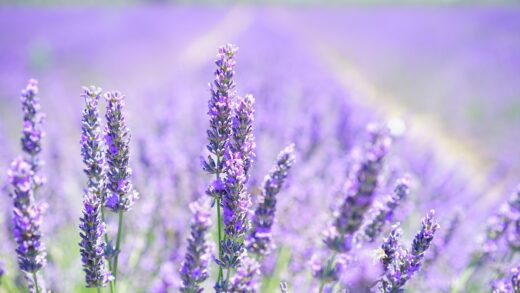The cornflower, this beautiful sky-blue flower, has been an inseparable part of the Hungarian landscape and grain fields for centuries. We can view it not just as a weed, but also as an exceptionally rewarding, low-maintenance ornamental plant that brings charm and color to any garden or flowerbed. The key to successful cultivation is understanding the plant’s basic needs and applying the right care techniques to ensure abundant and long-lasting blooms. In this article, we will detail all the steps and tricks to make the cornflower the jewel of the garden, from selecting the right location to plant protection and harvesting. With the right knowledge, anyone can successfully grow this modest yet stunning plant.
The popularity of the cornflower is no accident, as besides being a feast for the eyes, it is also incredibly versatile. Its petals can be used to garnish dishes, mixed into salads, or even consumed as tea, and it has long been used in folk medicine for its anti-inflammatory and soothing effects. The flowers attract pollinating insects, such as bees and butterflies, thereby contributing to the garden’s biodiversity and the fertilization of other plants. This quality makes it particularly valuable in organic gardens and nature-friendly farming. Therefore, growing cornflowers provides not only an aesthetic experience but is also ecologically beneficial.
The plant’s botanical name, Centaurea cyanus, originates from Greek mythology, from the word Centaur, referring to the healing centaurs, while cyanus refers to its characteristic blue color. Although we most often encounter its intense blue shade, there are also cultivated varieties in pink, purple, burgundy, and white, which can make flowerbeds even more diverse. These different color variations allow gardeners to creatively combine them with other annual or perennial plants, creating unique and harmonious compositions. The cornflower is thus a classic yet modern choice for every garden enthusiast.
Caring for the cornflower does not require any special expertise, making it an ideal choice for beginner gardeners as well. It adapts well to different soil types and is relatively drought-tolerant, which is becoming an increasingly important aspect in the age of climate change. In exchange for minimal attention, it rewards with weeks of abundant flowering, bringing freshness and naturalness to our surroundings. The ease of cultivation and the plant’s spectacular appearance make the cornflower one of the most beloved wildflowers in gardens worldwide.
Choosing the right growing location
The first and one of the most important steps in cultivating cornflowers is the careful selection of the right growing location. This plant is particularly light-demanding, so look for a spot in the garden where it receives at least six to eight hours of direct sunlight daily. In shady or semi-shady areas, the plant will become leggy, grow weaker stems, and its flowering will be less abundant, with the flower color becoming paler. Full sun ensures compact, vigorous growth and the development of vibrant, intensely colored flower heads.
More articles on this topic
In terms of soil type, the cornflower is not overly picky, but it prefers well-draining, loose-structured soils the best. Excessively heavy, clayey soils can cause waterlogging, leading to root rot and the plant’s demise. If the garden soil is heavy, it is worth improving its structure with sand or compost before sowing. A moderately nutrient-rich soil is ideal for it; in overly nutrient-rich soil, foliage development takes precedence over flowering.
The cornflower tolerates drier conditions well, but on extremely dry, sandy soils, it requires regular watering for proper development. A neutral or slightly alkaline soil pH (6.6-7.8) is most suitable for it. It tolerates acidic soils less well; in such cases, it is worth correcting the soil pH with lime. By choosing the right location, we can lay the foundation for the plant’s healthy development and abundant flowering.
Wind protection is also an important consideration, especially for taller varieties. Although the cornflower stem is relatively strong, continuous, strong wind can damage the plant, break the stems, and reduce the ornamental value of the flowers. A protected, sunny corner in the garden, next to a fence, or in the vicinity of other taller plants can be an ideal place for it. This protection helps to preserve the beauty of the plant’s habit and ensures that the flowers bloom undamaged.
Sowing and propagation
Propagating the cornflower is extremely simple, most often done by sowing seeds directly into open ground. The ideal time for sowing is in the spring, after the danger of frost has passed, usually from late April to late May. For earlier flowering in milder climates, seeds can be sown in early autumn, in September; the seedlings that establish themselves this way will survive the winter and bloom earlier and more vigorously in the spring. The advantage of autumn sowing is that the plants are more resistant to spring drought.
More articles on this topic
To prepare for sowing, first prepare the soil: weed it thoroughly, then loosen and level the surface with a rake. Sow the cornflower seeds about 0.5-1 cm deep, cover them thinly with soil, and then gently compact the soil around the seeds. After sowing, gently water the area, being careful not to wash the seeds out of the soil. Germination usually takes 7-14 days, depending on soil temperature and moisture.
When the small plants reach a height of 5-8 cm, it may be necessary to thin them. This means removing the plants that have grown too densely so that the remaining ones have enough space to develop. The ideal spacing is 15-30 cm, depending on the variety. This step is crucial, as crowded cornflowers are more susceptible to fungal diseases, such as powdery mildew, and their flower yield will be lower due to competition for nutrients and light.
Although direct sowing is the most common method, cornflowers can also be grown as seedlings. In this case, sow the seeds indoors in pots or seedling trays 4-6 weeks before the last spring frost. Keep the seedlings in a bright, warm place and ensure the soil is moderately moist. Transplant them outdoors when the danger of frost has definitely passed. This method provides a more controlled environment for germination and allows for more precise timing of the flowering period.
Watering and nutrient supply
The cornflower is a relatively drought-tolerant plant that is well-adapted to the conditions of the temperate climate zone, where precipitation distribution is often uneven. Consequently, overwatering poses a much greater threat to it than periodic drought. Waterlogging can cause root rot, leading to the rapid demise of the plant. Therefore, when watering, always keep the principle of moderation in mind and only water the plant when the top few centimeters of the soil are completely dry.
Young, freshly sprouted plants and seedlings have a higher water requirement; in their case, it is important to keep the soil continuously, slightly moist until the root system develops properly. Once the plant strengthens and reaches its mature size, the frequency of watering can be reduced. During long, dry periods, supplementary watering may naturally become necessary, which should be done in the early morning or evening hours to minimize water loss and to allow any water on the leaves to dry, preventing fungal diseases.
In terms of nutrient supply, the cornflower is quite undemanding. It generally does not need regular fertilization, especially if the soil has been improved with compost before sowing. Excessive nutrient supply, especially the use of high-nitrogen fertilizers, can be counterproductive. In such cases, the plant directs its energy to growing lush foliage instead of developing flowers, which can result in weak, leggy stems and sparse flowering.
If the soil is particularly poor in nutrients, or if the plant shows signs of yellowing, a single application of a balanced, low-nitrogen but higher phosphorus and potassium liquid fertilizer can be given at the beginning of the growing season. This stimulates root formation and flowering without encouraging excessive leaf growth. Overall, with cornflowers, the “less is more” principle applies when it comes to nutrient supplementation.
Plant protection: the most common pests and diseases
The cornflower is generally a resilient, healthy plant that is rarely attacked by serious diseases or pests. However, as with any garden plant, certain problems can occur that are worth paying attention to. Prevention is always the best defense, which for the cornflower means maintaining proper spacing, ensuring a sunny location, and avoiding overwatering. These conditions ensure good air circulation and reduce the risk of fungal infections.
The most common disease that can affect the cornflower is powdery mildew. This fungal infection forms a white, powdery coating on the leaves, stems, and sometimes the flowers. It usually appears in warm, humid weather, especially in overly dense plantings. To prevent it, provide enough space between plants for good air circulation. In case of infection, remove the diseased parts immediately, and in more severe cases, sulfur-based or special fungicides can be used, but preventive measures are often sufficient.
Among pests, aphids can occasionally cause problems, especially on young shoots and buds. These tiny insects suck the plant’s sap, which can lead to leaf distortion, yellowing, and slowed growth. They can be easily washed off the plant with a strong jet of water, or natural solutions such as potassium soap spray can be used. Introducing ladybugs and other predatory insects into the garden also effectively controls the aphid population.
Less commonly, root rot can also occur, caused by soil-borne fungi. This is almost always the result of overwatering and poorly drained soil. The plant begins to wilt, turns yellow, and then dies. Prevention is key: plant cornflowers in well-draining soil and avoid excessive watering. If the problem has already developed, the diseased plant can unfortunately usually not be saved and must be removed to prevent the infection from spreading to surrounding plants.
Pruning and encouraging flowering
The cornflower does not require traditional pruning like woody plants, but a few simple interventions can significantly extend the flowering period and increase the number of flowers. The most important of these tasks is the regular removal of spent flower heads, known as “deadheading.” This operation prevents the plant from directing its energy towards seed production and instead encourages it to form new flowers. You can snip off the faded flowers along with the stem, down to the first healthy leaf, using pruning shears or even your fingers.
This continuous maintenance not only stimulates flowering but also makes the plant’s overall appearance tidier and more aesthetic. If you allow the cornflower to set seed, the plant completes its life cycle, and its flowering will soon cease. By removing the spent flowers, you are essentially “tricking” the plant, which will then continuously try to reproduce, meaning it will produce more and more flowers. With this method, flowering can last until late autumn.
In mid-summer, when the first major wave of flowering subsides and the plants begin to look a bit leggy and untidy, a more drastic cut-back can be applied. In this case, the plants are cut back to about one-third or half their height. This seemingly drastic step encourages the plant to grow new, fresh shoots from the lower buds, which will produce a second, though usually somewhat weaker, wave of flowering within a few weeks. This technique works particularly well for denser, bed-grown stands.
If you want to collect cornflowers as cut flowers, it is best to cut the stems when the flowers have opened but are not yet fully open. Choose long-stemmed flowers and do the cutting in the early morning hours when the plants are still full of moisture. Place the cut flowers in fresh water immediately. Regular cutting for the vase has a similar effect on the plant as deadheading: it stimulates the formation of new flowers, so you can enjoy their beauty both in the garden and in your home.
Harvesting and use
Harvesting cornflowers is a simple process, the timing of which depends on the intended use. If you want to use the flowers fresh, as cut flowers, it is best to cut them at the peak of their bloom but before they are fully open, as mentioned above. For use as dried flowers, also choose vibrant, undamaged heads that are in full bloom. Carry out the harvest on a dry, sunny day, preferably in the morning hours after the morning dew has dried, as wet flowers are prone to molding during drying.
For drying, tie the cut flower stems into small bunches and hang them upside-down in a dark, dry, well-ventilated place, such as an attic or pantry, with the flower heads facing down. The dark place is important for the flowers to retain their vibrant blue color, which would fade in sunlight. Drying usually takes one to two weeks. Fully dried flowers have a crispy texture, and the petals can be easily separated from the flower head. Store the dried flowers and petals in an airtight glass jar in a place protected from light.
Cornflower petals are widely used in gastronomy. With their vibrant color, they beautifully garnish salads, cakes, desserts, and drinks. They have a slightly spicy, clove-like flavor that lends a special aroma to dishes. The dried petals are a popular ingredient in tea blends, not only for their color but also for their mild anti-inflammatory and soothing effects. They are often mixed, for example, with Earl Grey tea to give it a unique character.
Beyond gastronomic use, the cornflower also has a long tradition in folk medicine. An infusion made from the petals was used as an eye compress to soothe tired, inflamed eyes, which is where its German name “eye-breaker” (Augenbrecher) comes from. Consumed internally as a tea, it is attributed with cough-suppressing, appetite-stimulating, and mild diuretic effects. Although these effects are not always scientifically proven, the cornflower remains a popular ingredient in herbal blends and natural cosmetics.



